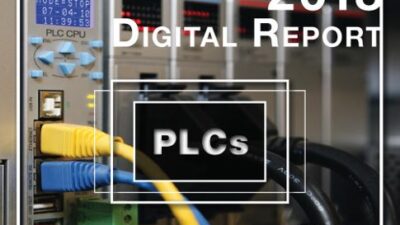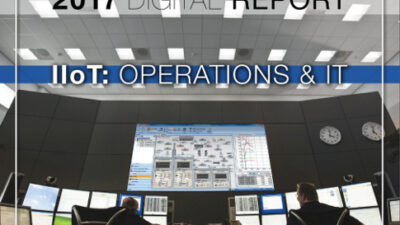A new whitepaper by Billy Piovesan of Advantech Corp.’s eAutomation Group discusses PACs.
Cinncinati, OH— A generation ago, digital electronics made the hardwired relay and controller obsolete in favor of the PLC. Now, the evolution continues and the programmable logic controller is being usurped by the programmable automation controller, or PAC. A new whitepaper by Billy Piovesan of Advantech Corp .’s eAutomation Group says amultaneously. The result is an easier to program, and easier to modify controller.
The whitepaper, entitled “Programmable Automation Controllers Find Their Niche…Everywhere!”, says one of the significant differences between PLCs and PACs is the way they handle input/output functions. PLCs constantly scan all the I/O in their systems continuously at a very high scan rate. While this enables very fast I/O response, it also limits the number of I/O points a PLC system can handle. PACs, by contrast, use a logical address system and a single tag name database very similar to traditional SCADA and DCS systems. Thus, a PAC can identify and map I/O points as needed.
The fact that PACs handle I/O and data in the same manner as traditional SCADA and DCS systems means they can more easily be interfaced directly with those systems, says Piovesan. PACs are often used as substitutes for SCADA RTUs (remote terminal units) and DCS field controllers, just because they work in a logically similar manner with data, he says.
Because PACs are in essence PCs, they are capable of being programmed in a variety of higher order programming languages. They make use of IEC 61131-3 and other software standards “that take the ability of programming in about 20 ladder-logic commands and replace it with a full featured programming capability,” says Piovesan. “In addition, there’s the concept of function blocks. A late addition to the world of PLCs, function blocks come directly from the DCS (distributed control system) world. PACs are designed to utilize function blocks and function block programming rather than the more limited ladder-logic programming of the PLC.”
Suppliers of PACs like Advantech have produced complete suites of programming software tools to enable sophisticated operations to be controlled by PACs. Advantech software includes PAC programming, HMI creation, SCADA, data acquisition and distributed control architectures, and an OPC server for connection to other control systems and even to MES and enterprise integration systems.
The whitepaper also covers the networking and determinism of PACs, as well as the power of open systems. See the full content in the Control Engineering Resource Center.
—Edited by Renee Robbins, Control Engineering
[email protected]


